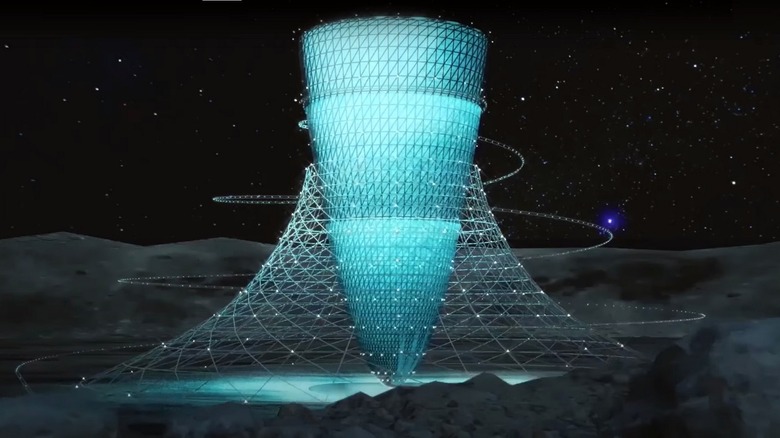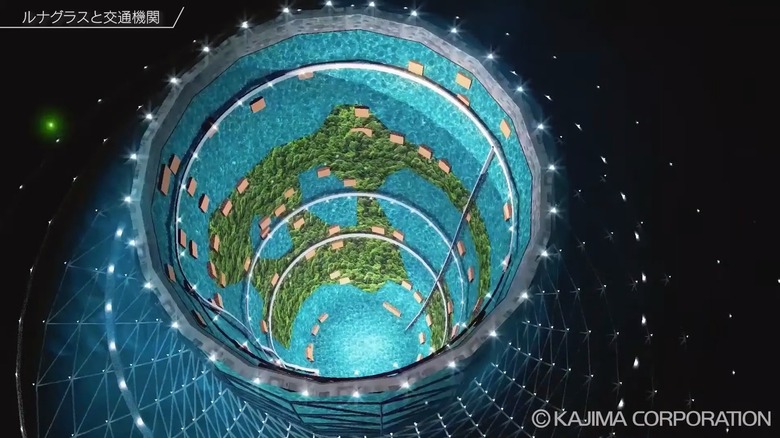Japanese Scientists Want To Build Artificial Gravity Bases On The Moon And Mars
There's no lack of research exploring the effects of living in gravity lower than that of Earth, with one of the key concerns being the reduction of bone mass, but the problem reaches a whole new level when it comes to supporting a few generations born and raised in such conditions. These concerns present an odd dilemma for scientists who envision a future in which people live on the moon or Mars — a future in which humanity will need to address the gravity situation, of course. In a bid to solve this critical problem, a team of Japanese scientists has proposed building a conical, habitable structure on the moon that rotates to generate a gravitational force with the same magnitude as the Earth's natural gravitational pull.
Experts from Kyoto University, in collaboration with the folks over at Kajima Construction Co. Ltd., gave a virtual presentation detailing a structure called Lunar Glass. The concept is essentially an inverted cone that rotates to create a centrifugal pull mimicking the effect of Earth's actual gravity. At roughly 1,300 feet tall and with a radius of 328 feet, researchers are hoping to build a simplified prototype version by 2050, according to The Asahi Shimbun. Regarding a final version that could support multiple generations, it would take approximately a full century to build. In addition to the moon, the team also talked about a parallel artificial gravity abode for humans on Mars, fittingly called Mars Glass.
A futuristic end-to-end solution
Touted as the first idea of its kind, the team is not stopping at just building a base on the moon and Mars. Interestingly, the Lunar and Mars Glass concepts are just one part of a larger project; the centerpiece is a transportation system between Earth and its destination that will maintain Earth-level gravity while ferrying passengers.
Dubbed the Hexagon Space Track System, it is essentially a railway-like interplanetary transportation system that would support both business and tourism activities. In an age where billionaires are already spending hundreds of millions on space joyrides, tourist activity on a gravity-loving space train to the moon — or Mars — doesn't sound too far-fetched. The track's station on the Earth is dubbed the Terra Station, while the Space Express train moving on a standard gauge track will have six coaches.
The leading and trailing cars will have rocket boosters strapped to them. The passenger capsules are hexagonal in shape and will come in two sizes with radii of approximately 50 and 100 feet each. The capsules will move alongside a central radial axis to generate a gravitational pull equal to that of planet Earth. However, Lunar Glass isn't the first project of its kind. In 1975, Stanford University experts presented a concept called Stanford Torus at the NASA Summer Study; it was imagined as a doughnut-shaped ring measuring a bit over a mile in diameter and was supposed to house anywhere between 10,000 to 140,000 residents.

